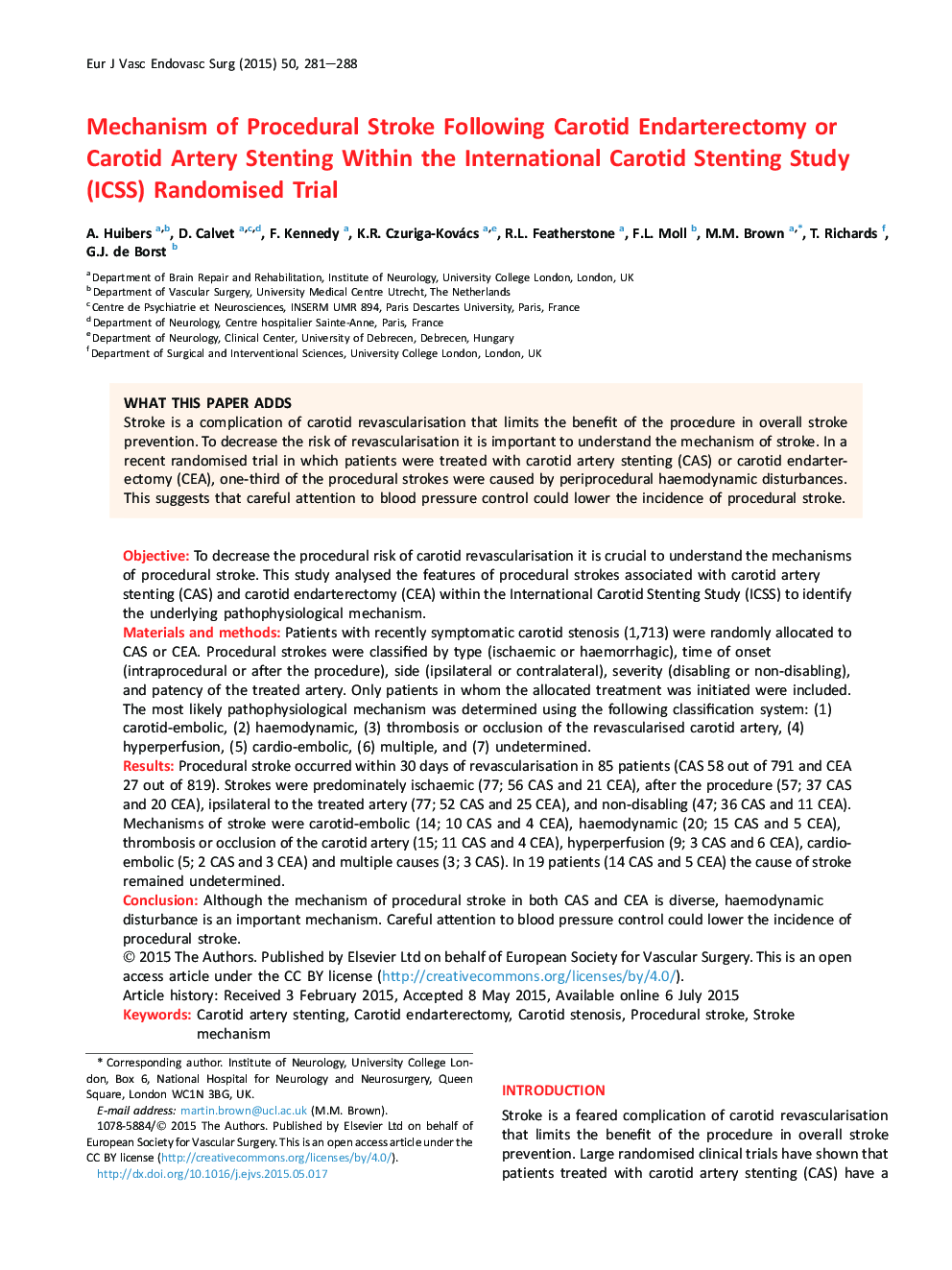| Article ID | Journal | Published Year | Pages | File Type |
|---|---|---|---|---|
| 5957483 | European Journal of Vascular and Endovascular Surgery | 2015 | 8 Pages |
ObjectiveTo decrease the procedural risk of carotid revascularisation it is crucial to understand the mechanisms of procedural stroke. This study analysed the features of procedural strokes associated with carotid artery stenting (CAS) and carotid endarterectomy (CEA) within the International Carotid Stenting Study (ICSS) to identify the underlying pathophysiological mechanism.Materials and methodsPatients with recently symptomatic carotid stenosis (1,713) were randomly allocated to CAS or CEA. Procedural strokes were classified by type (ischaemic or haemorrhagic), time of onset (intraprocedural or after the procedure), side (ipsilateral or contralateral), severity (disabling or non-disabling), and patency of the treated artery. Only patients in whom the allocated treatment was initiated were included. The most likely pathophysiological mechanism was determined using the following classification system: (1) carotid-embolic, (2) haemodynamic, (3) thrombosis or occlusion of the revascularised carotid artery, (4) hyperperfusion, (5) cardio-embolic, (6) multiple, and (7) undetermined.ResultsProcedural stroke occurred within 30 days of revascularisation in 85 patients (CAS 58 out of 791 and CEA 27 out of 819). Strokes were predominately ischaemic (77; 56 CAS and 21 CEA), after the procedure (57; 37 CAS and 20 CEA), ipsilateral to the treated artery (77; 52 CAS and 25 CEA), and non-disabling (47; 36 CAS and 11 CEA). Mechanisms of stroke were carotid-embolic (14; 10 CAS and 4 CEA), haemodynamic (20; 15 CAS and 5 CEA), thrombosis or occlusion of the carotid artery (15; 11 CAS and 4 CEA), hyperperfusion (9; 3 CAS and 6 CEA), cardio-embolic (5; 2 CAS and 3 CEA) and multiple causes (3; 3 CAS). In 19 patients (14 CAS and 5 CEA) the cause of stroke remained undetermined.ConclusionAlthough the mechanism of procedural stroke in both CAS and CEA is diverse, haemodynamic disturbance is an important mechanism. Careful attention to blood pressure control could lower the incidence of procedural stroke.
